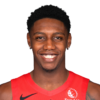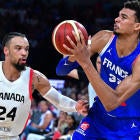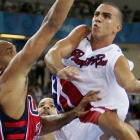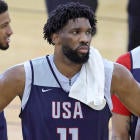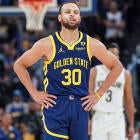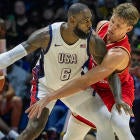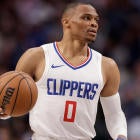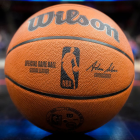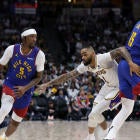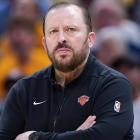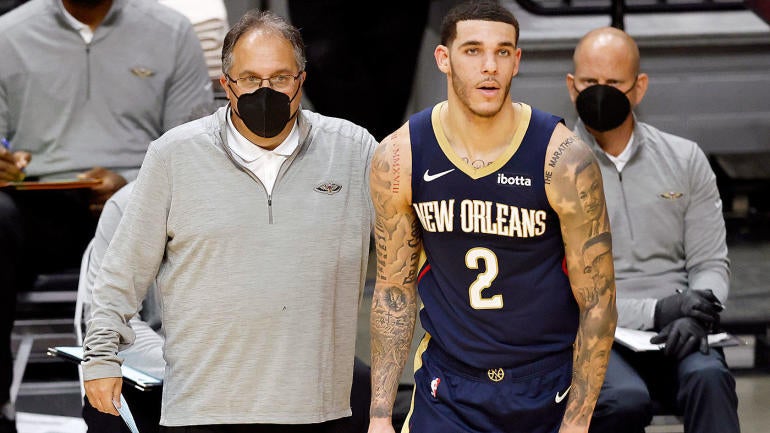
We know about the MVP candidates, but as we near the March 25 trade deadline and embark upon the stretch run of this truncated regular season, here are five players having quietly great seasons.
Ball didn't sign a rookie extension this past offseason, and it's going to pay off as he stands to command in the neighborhood of $80 million over four years as a restricted free agent this summer. If the Pelicans, who have the right to match any offer Ball gets, aren't willing to go that high, they can still trade him before the deadline rather than lose him for nothing.
The big question about Ball has always been his shooting. Last season he shot 38 percent from 3, per Cleaning the Glass, and the Pelicans, before committing long term, wanted to see if he could back that up, which he has done and then some. All told, Ball is hitting 39 percent of his 3s, per CTG. Since February, he's at 43 percent.
In the half court, New Orleans uses Ball in more of an off-ball role as Zion Williamson and Brandon Ingram have assumed the bulk of the initiating responsibility, and Ball has thrived in support of those more gifted off-the-dribble creators. Throw in his versatile/athletic/energetic defense and elite ball-pushing instincts, and Lonzo has become a guy who can, and will, fit inside just about any system.
It wasn't long ago that he was seen as the exact opposite -- a gifted, pass-first player without a place in the scoring point guard era, a non-shooter who couldn't exist in an off-ball role, almost an offensive misfit if we're being honest. But he has flipped the entire conversation, and it's going to pay off big time.
Can SGA be the best player on a contending team? Perhaps not. Does he need to be? Perhaps not. The Thunder have a zillion draft picks in their war chest, and at some point, it would seem, Sam Presti will consolidate some of that collateral into a name player who can share the star burden with SGA.
In the meantime, SGA is playing like an All-Star. Pay no mind to the fact that he didn't make the All-Star team this season; the Western Conference is where good -- or even borderline great -- players' All-Star dreams go to die. He'll earn the distinction eventually. In the meantime, SGA is one of just two players averaging at least 23 points, six assists and four rebounds on 50-percent shooting and 40-percent from 3. The other is Nikola Jokic, who is a top-shelf MVP candidate.
SGA is equally relentless and crafty when it comes to getting in the paint. His 25.2 drives per game are the most recorded since advanced stats began tracking drives in 2013-14 and just four fewer than the Blazers create as an entire team. Once he gets in the paint, SGA is finishing shots at the rim and from short midrange at career-high clips. His 13.1 drive points per game trail only Luka Doncic.
He is ball dominant not just in the context of OKC's overall offense, but in a series-of-moves kind of way. He can be all over the place with the ball, in a good way, stopping and starting, fancy footwork, up-and-under pump fakes, top 10 in average dribbles (5.52) and seconds (5.88) per touch. But he doesn't waste all that action. SGA holds a 54.2 effective field goal percentage after taking at least seven dribbles, a better mark than the likes of LeBron James, Kawhi Leonard, Bradley Beal and Trae Young.
Donovan Mitchell is the biggest name. Rudy Gobert is the defensive anchor and Utah's most valuable player. Jordan Clarkson gets all the Sixth Man of the Year buzz. Mike Conley made his first All-Star team. And then there's Ingles, who's quietly having, literally, the most efficient shooting season in NBA history.
Random Saturday morning stat: Joe Ingles (currently shooting 54% overall/49% on 3s/66% on 2s/89% at the line) is on pace for the highest single-season true-shooting % in NBA history, per a @bball_ref data dive.
— Zach Lowe (@ZachLowe_NBA) March 20, 2021
Entering play on Saturday, Ingles is scoring a redonkulous 146.8 points per 100 shot attempts, the highest mark in the league among players with at least a 15.0 usage rate. Utah's spacing is exquisite. Ingles helps create it as a 50 percent 3-point shooter (yes, you're reading that right), per CTG, and benefits from it as a much better playmaker than a lot of people realize. He is awesome running pick and roll, and he's fantastic at getting into the lane and holding the ball until the last second as defenders decide whether to guard against the lob or push up on Ingles, who can float any shot in with the touch of a butterfly's landing.
Melo haters are going to point to the fact that Portland is 3.6 points worse per 100 possessions when he is on the floor, but the Blazers are walking a razor-thin point differential as a team. Besides that, those numbers might look different if CJ McCollum and Jusuf Nurkic, who would occupy more lineups with Melo, hadn't missed some 60 combined games.
The bottom line is Melo is still a straight-up shot maker, and in a Portland offense that creates almost nothing via ball and player movement, he is vital as another individual creator. Entering Saturday, Anthony is shooting 40 percent from 3, per CTG, and he is making a lot of those shots inside the clutch situations that have defined Portland's success.
Via Inpredictable -- which defines clutch shots as those that have an "elevated impact on win probability" -- Anthony is making 47.8 percent of his clutch 3-pointers with a 56.5 effective field-goal percentage, which is higher than Damian Lillard's. No, Melo is not Lillard. Nobody is right now. But that is some proper context as it pertains to the massive shots Anthony, as well as Gary Trent Jr., has shown a penchant for making.
People love to criticize Anthony as a ball stopper. Fine. He's scoring 1.02 points per isolation possession, which is significantly better than the likes of LeBron James and Jayson Tatum and the same mark as Chris Paul and Giannis Antetokounmpo. On a team that relies on making tough shots to survive, Melo is still one of the better tough-shot makers around. And with McCollum and Lillard drawing attention in the playoffs, his floor-spacing and timely 3s are going to be huge.
If Barrett's 36 percent 3-point shooting is real, the Knicks have a player on their hands. Barrett is a versatile defender, long and strong and surprisingly dependable for a 20-year-old -- all collective traits of New York's third-ranked defense. Tom Thibodeau loves Barrett's downhill attacking, especially as a secondary creator off of Julius Randle. Since the All-Star break, Barrett is averaging 22.2 points and 6.6 rebounds per game on 50 percent shooting, including 40 percent from 3 on low-to-moderate volume.
Barrett remains a pretty inefficient scorer overall. He lacks the quickness to create real space as a penetrator and he can be a clunky finisher when contested. His 49.2 eFG ranks in the 25th percentile among wings. But he's crafty with his moves, and at the end of the day, as pointed out in this really good piece by Dan DeVine of The Ringer, Barrett is currently on pace to become the sixth player ever to average at least 18 points, six rebounds, and three assists per 36 minutes before his age-21 season.
Barrett suffers from comparison to Ja Morant and Zion Williamson, the two players drafted ahead of him in 2019, but he's the second-best player on a current playoff team and he still can't legally buy a beer. Perhaps the 3-point shooting will regress, but to the eye, it does not look like a fluke. He's a significantly more comfortable shooter than he was as a rookie, and it's showing in a 12 percent uptick in free-throw percentage.
I was not a fan of Barrett coming out of Duke. I am hesitant to believe in anyone who can't shoot, particularly guys who get a lot of their college stats by just beating up weaker players and scoring in transition. But I'm coming around. If the shooting is for real, I might be all in.











